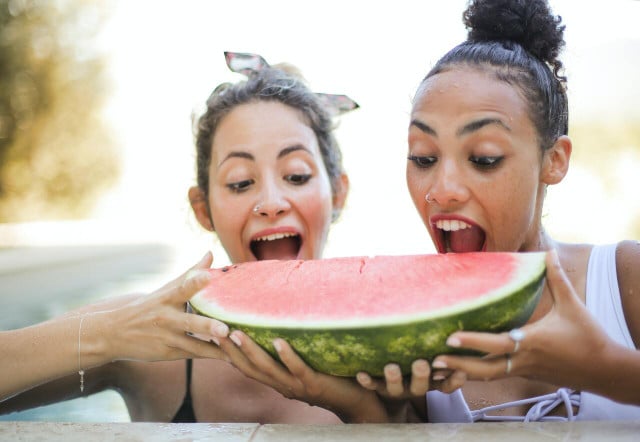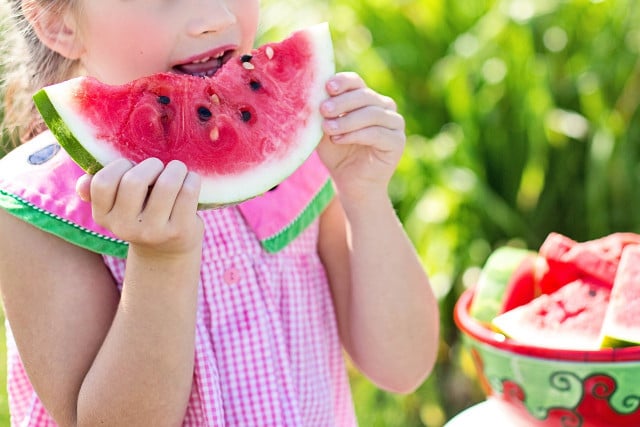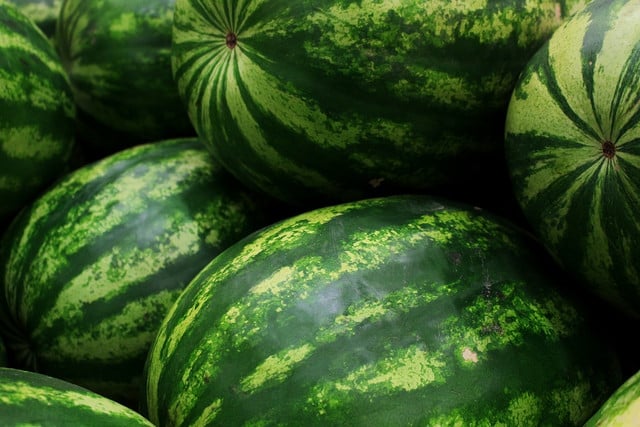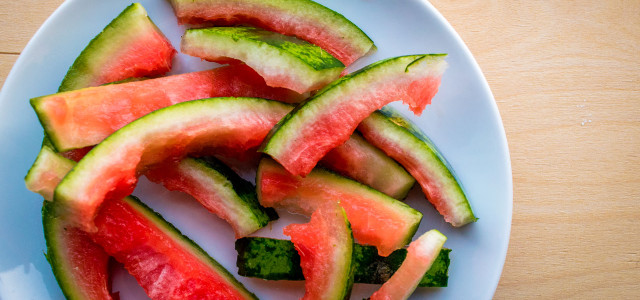Knowing how to tell if a watermelon is ripe is an essential summertime skill. Here are some important FAQs and 7 proven methods for figuring out if a watermelon is ready to eat.
Watermelons, a symbol of summer, are not only delicious but also packed with nutrients and hydration benefits. However, unlike cantaloupes, watermelons don’t ripen after they’re picked. This makes knowing how to tell if a watermelon is ripe crucial to get the best taste and texture.
Picking a good watermelon might seem tricky, but there are some foolproof ways to know you’re selecting the ripest one. We’ll show you seven easy hacks to determine watermelon ripeness. From checking the field spot to tapping it, these methods will get you the sweetest, most refreshing watermelons every time.
The Importance of Choosing a Ripe Watermelon

Opting for a ripe fruit is more than just a matter of good taste — it’s about getting the most health benefits. A ripe watermelon has high levels of vitamins A and C, along with powerful antioxidants that contribute to your overall health and well-being.
Moreover, a ripe watermelon’s high water content makes it an excellent choice for staying hydrated, particularly during warmer months. Watermelons are about 92% water, making them a delicious way to replenish your body’s fluids while satisfying your sweet tooth.
But learning how to tell if a watermelon is ripe is important for more than just nutrition. The texture of a ripe watermelon is firm and juicy, providing a satisfying crunch. Meanwhile, an unripe watermelon can be grainy and lack the delicious sweetness you expect from this summer fruit. Moreover, overripe watermelons often have a mushy texture that many find unappetizing.
Tip: These watermelon punch and watermelon kimchi recipes are the perfect ways to use up watermelon that isn’t perfectly ripe!
How to Tell If a Watermelon is Ripe: 7 Methods



Selecting a ripe watermelon involves a series of simple tests that anyone can do. These techniques work for both store-bought and homegrown watermelons. Using them will help you enjoy your watermelon at peak ripeness, guaranteeing the best texture and flavor.
Here are seven tests that help you tell if a watermelon is ripe:
1. The Thump Test
This is one of the most common ways of determining the ripeness of a watermelon. Thump the watermelon with your hand. Your watermelon is likely ripe if you hear a deep hollow sound, similar to a knock on the door. A high-pitched sound may mean the watermelon isn’t fully mature, while an overripe melon will emit more of a thud.
2. The Field Spot Test
The field spot refers to the underside of the melon — where it rested on the field as it grew. A ripe watermelon will have a yellow spot, indicating it ripened on the vine long enough. If the field spot is pale white, the watermelon might not be ripe and could have been picked too soon.
3. The Weight Test
Among several similar-sized watermelons, the ripest one will usually be the heaviest. This is because watermelons gain water weight as they ripen. An overripe watermelon might also feel heavy, so it’s best to use this method together with another test.
4. The Smell Test
A ripe watermelon will emit a sweet aroma, detectable even through the rind. If there’s no smell, the watermelon may not be mature. An overly strong or unpleasant smell could indicate an overripe or rotting melon.
5. The Squeeze Test
Ripe watermelons are juicy but firm. They should have a slight give when you press the rind. You might want to pick a firmer melon if it’s very soft. Squeezing the end of the watermelon can also help: ripe watermelons will have a little give, while unripe ones will be solid, and overripe ones, squishy.
6. The Tendril Test
The tendril, the curly part where the watermelon is connected to the vine, should be almost completely dried out in a ripe watermelon. If it’s still green, the watermelon may not be ripe. Store-bought varieties often have the tendril removed, so this test works better for homegrown or farmer’s market melons.
7. The Color Test
A ripe watermelon will have a dark green color and high contrast between its stripes. If the watermelon passes this test, it’s likely ripe and ready to be enjoyed.
Frequently Asked Questions about Watermelon Ripeness



Below, we answer some of the most common questions that can come up during watermelon season:
1. What happens if you eat unripe watermelon? Eating an unripe watermelon won’t cause harm, but it might not be as enjoyable. The texture can be a bit grainy, and the flavor lacks the sweetness of a ripe watermelon.
2. How long does it take for watermelon to ripen? Unlike some fruits, watermelons don’t ripen after being picked. Depending on the variety, they typically mature within 80-120 days of planting. The ripening process occurs on the vine.
3. Can you ripen watermelon after it’s been cut? Cut watermelon can’t ripen further. If you cut into a watermelon and find it’s underripe, the best thing to do is store it in the fridge and consume it as soon as possible.
4. Can you ripen watermelon in the sun? Exposing a watermelon to the sun won’t help it ripen, as watermelons don’t ripen after they’ve been picked. The sun might actually overheat the fruit and lead to spoilage.
5. How can you tell if watermelon is overripe? An overripe watermelon may have a dull color and a soft, spongy feel. When cut open, the flesh might look grainy, overly soft, or have a fermented smell. The best way to avoid an overripe watermelon is to learn how to tell if a watermelon is ripe before purchasing or picking.
Key Takeaways and Proper Storage
The seven methods — thump, field spot, weight, smell, squeeze, tendril and color tests — are the best ways to tell if a watermelon is ripe. Remember, watermelons don’t ripen after they’re picked, so choosing correctly is key.
Once you’ve selected your perfect watermelon, proper food storage techniques will prolong its life and avoid food waste.
Keep the whole watermelon at room temperature until you’re ready to cut it. After cutting, you can either store any leftovers in airtight containers in the refrigerator for up to a week (cover cut surfaces to stop it from drying out) or freeze watermelon to enjoy later.
Read more:
- 3 Surprising Health Benefits of Green Bananas
- 5 Sweet Summer Fruit Soup Recipes
- Growing Goji Berries: Your Own Superfood Supply
- How to Ripen Jackfruit Quickly
Do you like this post?









